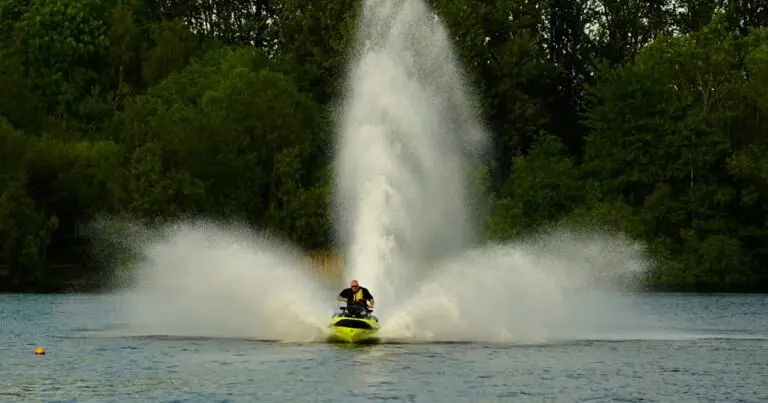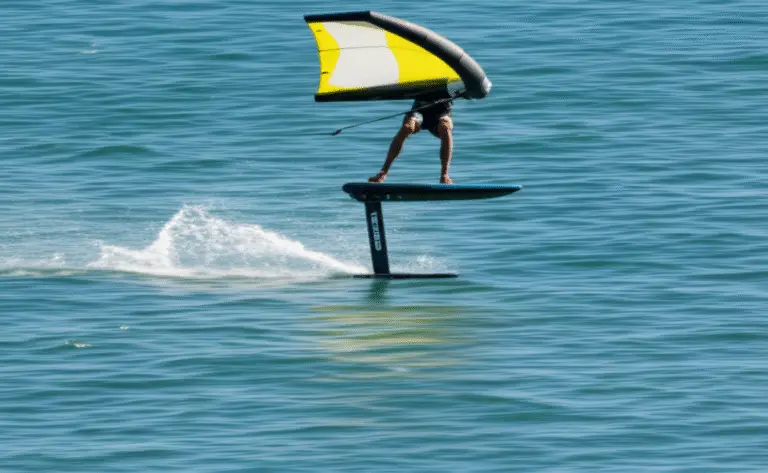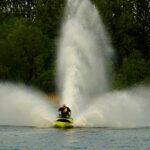Support our hydrofoil educational content for free when you purchase through links on our site. Learn more
What Are the 6 Different Types of Hydrofoil Boards in 2025? 🌊
Ever wondered what it feels like to fly just above the water’s surface? Hydrofoil boards make that dream a reality, but with so many types out there, which one’s right for you? Whether you’re chasing waves, harnessing the wind, or cruising with electric power, the world of hydrofoiling offers a thrilling variety of boards tailored to every rider’s style and skill level. Stick with us as we break down the 6 main types of hydrofoil boards you need to know about in 2025 — plus insider tips from the Hydrofoiling™ crew that’ll help you pick your perfect ride.
Here’s a teaser: Did you know some hydrofoil boards can reach speeds over 30 knots while gliding silently above the water? But that’s just the start. From the nimble surf foils carving waves like never before, to the futuristic eFoils powered by electric motors, the options are as exciting as they are diverse. Ready to find out which hydrofoil board will launch your water adventures into the stratosphere? Let’s dive in!
Key Takeaways
- Six distinct types of hydrofoil boards cater to different water sports: surf, kite, wing, eFoil, wake, and SUP foil boards.
- Skill level and riding style are crucial in choosing the right board — beginners benefit from stable, forgiving designs like eFoils or SUP foils.
- Foil components (wings, masts, fuselages) dramatically affect performance and handling.
- Top brands to watch in 2025 include Liquid Force, Cabrinha, Slingshot, and Fliteboard.
- Safety gear and maintenance are essential for a smooth, injury-free ride.
Ready to explore the best hydrofoil boards on the market? Check out these top brands to get started:
- Liquid Force Hydrofoil Boards: Amazon | Official Site
- Cabrinha Kite Foil Boards: Amazon | Official Site
- Fliteboard eFoils: Official Site
Table of Contents
- ⚡️ Quick Tips and Facts About Hydrofoil Boards
- 🌊 Hydrofoil Boards 101: A Deep Dive Into Their Evolution and Types
- 1. 🏄♂️ Surf Foil Boards: Riding Waves Like Never Before
- 2. 🪁 Kite Foil Boards: Soaring with the Wind
- 3. 🪂 Wing Foil Boards: The New Wave of Freedom
- 4. ⚡️ eFoil Boards: The Electric Revolution on Water
- 5. 🚤 Wake Foil Boards: Catching Air Behind the Boat
- 6. 🏄♀️ SUP Foil Boards: Stand-Up Paddleboarding Meets Flight
- Foil Components Breakdown: Wings, Masts, and Fuselages Explained
- Choosing the Right Hydrofoil Board for Your Skill Level and Style
- Top Brands and Models to Watch in 2024
- Maintenance Tips to Keep Your Hydrofoil Board Flying High
- Common Challenges and How to Overcome Them on Hydrofoil Boards
- Hydrofoil Safety Essentials: Gear and Best Practices
- The Future of Hydrofoil Boards: Trends and Innovations to Watch
- Conclusion: Which Hydrofoil Board Is Right for You?
- Recommended Links for Hydrofoil Enthusiasts
- FAQ: Your Burning Questions About Hydrofoil Boards Answered
- Reference Links and Resources for Further Reading
Quick Tips and Facts About Hydrofoil Boards
To get started with hydrofoiling, it’s essential to understand what it is. Check out our article on what is hydrofoiling explained? to learn more about this exciting sport. Hydrofoil boards are a type of watercraft that uses a hydrofoil to lift the board out of the water, reducing drag and allowing the rider to glide across the surface. Here are some quick tips and facts about hydrofoil boards:
- Speed: Hydrofoil boards can reach speeds of up to 30 knots (56 km/h).
- Types: There are several types of hydrofoil boards, including surf foil boards, kite foil boards, wing foil boards, eFoil boards, and wake foil boards.
- Benefits: Hydrofoil boards offer a unique and exhilarating riding experience, with benefits including reduced drag, increased speed, and improved maneuverability.
- Skill level: Hydrofoil boards are suitable for riders of all skill levels, from beginners to advanced riders.
Hydrofoil Boards 101: A Deep Dive Into Their Evolution and Types
Hydrofoil boards have evolved significantly over the years, with various types of boards emerging to cater to different riding styles and disciplines. In this section, we’ll delve into the history and evolution of hydrofoil boards, as well as the different types of boards available.
History of Hydrofoil Boards
The concept of hydrofoiling dates back to the early 20th century, when hydrofoils were first used in boats to reduce drag and increase speed. However, it wasn’t until the 1990s that hydrofoil boards began to emerge as a distinct type of watercraft. Since then, hydrofoil boards have undergone significant developments, with advancements in materials, design, and technology.
Types of Hydrofoil Boards
There are several types of hydrofoil boards, each with its own unique characteristics and riding style. Some of the most common types of hydrofoil boards include:
- Surf Foil Boards: Designed for surfing, these boards are typically shorter and more maneuverable than other types of hydrofoil boards.
- Kite Foil Boards: Designed for kiteboarding, these boards are typically longer and more stable than surf foil boards.
- Wing Foil Boards: Designed for wing foiling, these boards are typically shorter and more maneuverable than kite foil boards.
- eFoil Boards: Designed for electric foiling, these boards are powered by an electric motor and are typically more stable and easier to ride than other types of hydrofoil boards.
- Wake Foil Boards: Designed for wakeboarding, these boards are typically shorter and more maneuverable than other types of hydrofoil boards.
1. Surf Foil Boards: Riding Waves Like Never Before
Surf foil boards are designed for surfing and are typically shorter and more maneuverable than other types of hydrofoil boards. Here are some key features and benefits of surf foil boards:
- Length: Surf foil boards are typically between 4-6 feet (1.2-1.8 meters) in length.
- Width: Surf foil boards are typically between 18-24 inches (45-60 cm) in width.
- Thickness: Surf foil boards are typically between 2-4 inches (5-10 cm) in thickness.
- Foil: Surf foil boards use a hydrofoil to lift the board out of the water, reducing drag and allowing the rider to glide across the surface.
- Riding style: Surf foil boards are designed for carving and turning, with a focus on maneuverability and responsiveness.
2. Kite Foil Boards: Soaring with the Wind
Kite foil boards are designed for kiteboarding and are typically longer and more stable than surf foil boards. Here are some key features and benefits of kite foil boards:
- Length: Kite foil boards are typically between 5-7 feet (1.5-2.1 meters) in length.
- Width: Kite foil boards are typically between 20-28 inches (50-70 cm) in width.
- Thickness: Kite foil boards are typically between 2-4 inches (5-10 cm) in thickness.
- Foil: Kite foil boards use a hydrofoil to lift the board out of the water, reducing drag and allowing the rider to glide across the surface.
- Riding style: Kite foil boards are designed for speed and stability, with a focus on cruising and touring.
3. Wing Foil Boards: The New Wave of Freedom
Wing foil boards are designed for wing foiling and are typically shorter and more maneuverable than kite foil boards. Here are some key features and benefits of wing foil boards:
- Length: Wing foil boards are typically between 4-6 feet (1.2-1.8 meters) in length.
- Width: Wing foil boards are typically between 18-24 inches (45-60 cm) in width.
- Thickness: Wing foil boards are typically between 2-4 inches (5-10 cm) in thickness.
- Foil: Wing foil boards use a hydrofoil to lift the board out of the water, reducing drag and allowing the rider to glide across the surface.
- Riding style: Wing foil boards are designed for carving and turning, with a focus on maneuverability and responsiveness.
4. eFoil Boards: The Electric Revolution on Water
eFoil boards are designed for electric foiling and are powered by an electric motor. Here are some key features and benefits of eFoil boards:
- Length: eFoil boards are typically between 5-7 feet (1.5-2.1 meters) in length.
- Width: eFoil boards are typically between 20-28 inches (50-70 cm) in width.
- Thickness: eFoil boards are typically between 2-4 inches (5-10 cm) in thickness.
- Motor: eFoil boards use an electric motor to propel the board through the water.
- Riding style: eFoil boards are designed for cruising and touring, with a focus on stability and ease of use.
5. Wake Foil Boards: Catching Air Behind the Boat
Wake foil boards are designed for wakeboarding and are typically shorter and more maneuverable than other types of hydrofoil boards. Here are some key features and benefits of wake foil boards:
- Length: Wake foil boards are typically between 4-6 feet (1.2-1.8 meters) in length.
- Width: Wake foil boards are typically between 18-24 inches (45-60 cm) in width.
- Thickness: Wake foil boards are typically between 2-4 inches (5-10 cm) in thickness.
- Foil: Wake foil boards use a hydrofoil to lift the board out of the water, reducing drag and allowing the rider to glide across the surface.
- Riding style: Wake foil boards are designed for carving and turning, with a focus on maneuverability and responsiveness.
6. SUP Foil Boards: Stand-Up Paddleboarding Meets Flight
SUP foil boards are designed for stand-up paddleboarding and are typically longer and more stable than other types of hydrofoil boards. Here are some key features and benefits of SUP foil boards:
- Length: SUP foil boards are typically between 7-10 feet (2.1-3 meters) in length.
- Width: SUP foil boards are typically between 24-32 inches (60-80 cm) in width.
- Thickness: SUP foil boards are typically between 2-4 inches (5-10 cm) in thickness.
- Foil: SUP foil boards use a hydrofoil to lift the board out of the water, reducing drag and allowing the rider to glide across the surface.
- Riding style: SUP foil boards are designed for cruising and touring, with a focus on stability and ease of use.
Foil Components Breakdown: Wings, Masts, and Fuselages Explained
A hydrofoil board consists of several key components, including the wing, mast, and fuselage. Here’s a breakdown of each component and their role in the overall performance of the board:
- Wing: The wing is the hydrofoil that lifts the board out of the water, reducing drag and allowing the rider to glide across the surface. Wings come in different shapes and sizes, with varying levels of lift and drag.
- Mast: The mast is the vertical component that connects the wing to the board. Masts come in different lengths and materials, with varying levels of stiffness and durability.
- Fuselage: The fuselage is the horizontal component that connects the wing to the mast. Fuselages come in different lengths and materials, with varying levels of stiffness and durability.
Choosing the Right Hydrofoil Board for Your Skill Level and Style
With so many different types of hydrofoil boards available, it can be difficult to choose the right one for your skill level and riding style. Here are some tips to help you make the right choice:
- Skill level: If you’re a beginner, consider a more stable and forgiving board, such as an eFoil board or a SUP foil board. If you’re an advanced rider, consider a more maneuverable and responsive board, such as a surf foil board or a wing foil board.
- Riding style: If you’re looking for a board that’s designed for carving and turning, consider a surf foil board or a wing foil board. If you’re looking for a board that’s designed for cruising and touring, consider an eFoil board or a SUP foil board.
Top Brands and Models to Watch in 2024
Here are some top brands and models to watch in 2024:
- Liquid Force: Known for their high-performance surf foil boards and kite foil boards.
- Cabrinha: Known for their high-performance kite foil boards and wing foil boards.
- Slingshot: Known for their high-performance surf foil boards and wake foil boards.
- Fliteboard: Known for their high-performance eFoil boards.
Maintenance Tips to Keep Your Hydrofoil Board Flying High
To keep your hydrofoil board in top condition, it’s essential to perform regular maintenance. Here are some tips to help you keep your board flying high:
- Clean the board: Regularly clean the board to remove dirt and debris.
- Check the foil: Regularly check the foil for damage or wear.
- Check the mast: Regularly check the mast for damage or wear.
- Check the fuselage: Regularly check the fuselage for damage or wear.
Common Challenges and How to Overcome Them on Hydrofoil Boards
Here are some common challenges that riders may face on hydrofoil boards, along with some tips on how to overcome them:
- Balance: To improve balance, focus on keeping your weight centered over the board and keeping your knees bent.
- Speed: To improve speed, focus on keeping the board flat and using the wind or motor to propel you forward.
- Turning: To improve turning, focus on shifting your weight and using the foil to carve through the water.
Hydrofoil Safety Essentials: Gear and Best Practices
To stay safe while riding a hydrofoil board, it’s essential to wear the right gear and follow best practices. Here are some safety essentials to keep in mind:
- Helmet: Always wear a helmet to protect your head from impact.
- Life jacket: Always wear a life jacket to stay afloat in case of an emergency.
- Leash: Always wear a leash to stay connected to the board.
- Weather: Always check the weather forecast before heading out, and avoid riding in strong winds or rough seas.
The Future of Hydrofoil Boards: Trends and Innovations to Watch
The future of hydrofoil boards is exciting, with several trends and innovations on the horizon. Here are some things to watch:
- Electric foiling: Electric foiling is becoming increasingly popular, with several brands offering eFoil boards.
- Wing foiling: Wing foiling is also becoming increasingly popular, with several brands offering wing foil boards.
- Advanced materials: Advanced materials, such as carbon fiber and titanium, are being used to create lighter and stronger hydrofoil boards.
- Improved design: Improved design and engineering are allowing for more efficient and maneuverable hydrofoil boards.
Conclusion: Which Hydrofoil Board Is Right for You?
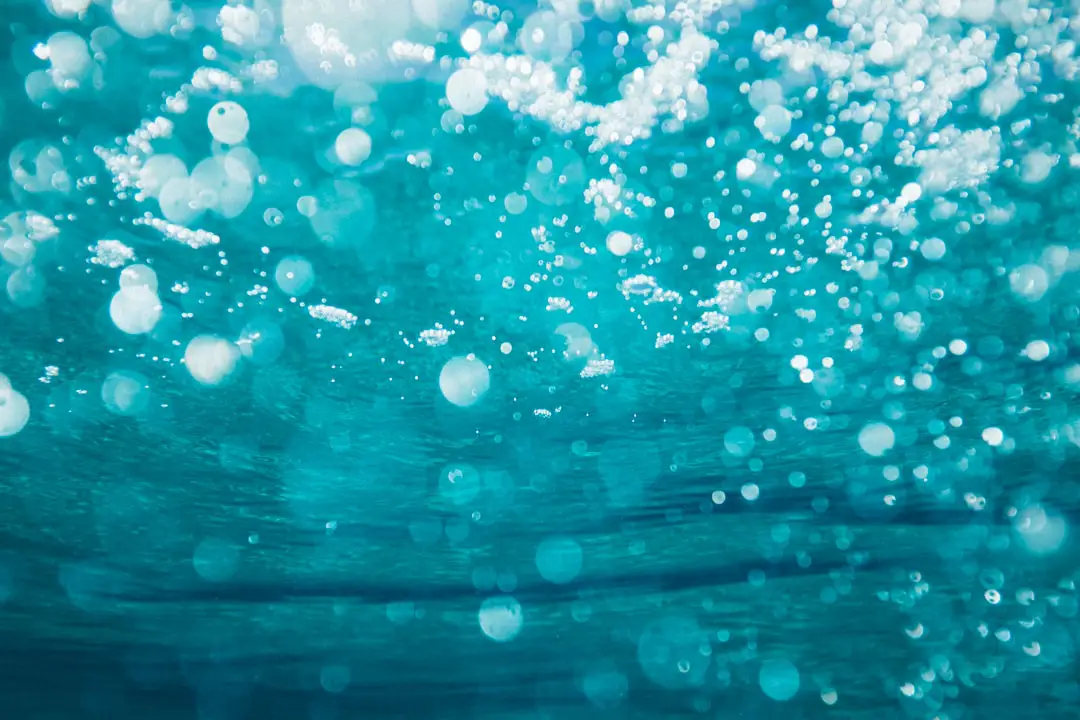
Wow, what a ride! From the carving agility of surf foil boards to the wind-powered freedom of kite and wing foil boards, and the electric-powered smoothness of eFoils, we’ve covered a lot of ground. Each type of hydrofoil board offers a unique flavor of flight on water — whether you’re chasing waves, cruising with a kite, or simply enjoying the thrill of effortless gliding.
Here’s the bottom line:
- If you’re a beginner, we highly recommend starting with a freeride-style board or an eFoil like the Fliteboard, which offers stability and motorized assistance to ease you into the sport.
- For intermediate to advanced riders, surf and wing foil boards provide the responsiveness and maneuverability needed for carving and tricks.
- If speed and performance are your jam, look into race or freestyle boards with carbon construction and high-aspect wings.
Remember, the right board depends on your skill level, riding style, and the water conditions you frequent. Don’t rush—take your time to test different setups if you can, and always prioritize safety.
Speaking of safety, keep those helmets and life jackets handy! Hydrofoiling is exhilarating but demands respect for the water and your gear.
Ready to take off? Dive into our recommended gear below and start your hydrofoil adventure today! 🌊🚀
Recommended Links for Hydrofoil Enthusiasts
Looking to shop or learn more? Here are some top picks and resources to get you flying:
-
Liquid Force Hydrofoil Boards:
Amazon | Liquid Force Official Website -
Cabrinha Kite Foil Boards:
Amazon | Cabrinha Official Website -
Slingshot Wake and Surf Foil Boards:
Amazon | Slingshot Official Website -
Fliteboard eFoil Boards:
Fliteboard Official Website -
Books on Hydrofoiling and Water Sports:
-
AXIS S-Series Standard Fuselage 765mm:
MACkite Boardsports
FAQ: Your Burning Questions About Hydrofoil Boards Answered
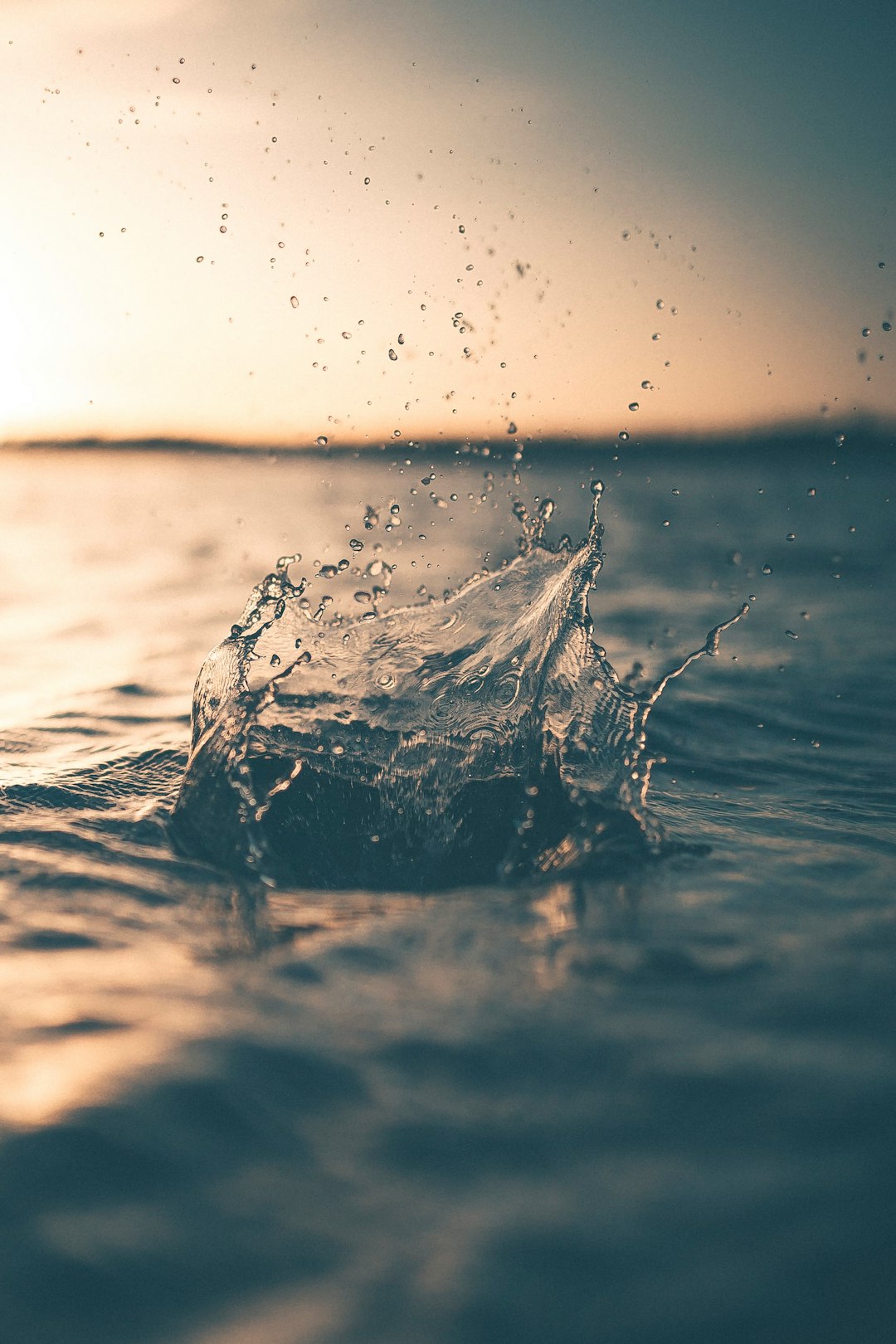
What is the difference between a prone hydrofoil board and a stand-up hydrofoil board for riding purposes?
Prone hydrofoil boards are designed for riders lying down or paddling on their stomachs, often used in prone surfing or prone kiteboarding. They tend to be smaller and more maneuverable, allowing for quick turns and wave catching. Stand-up hydrofoil boards, on the other hand, are larger and designed for standing riders, offering more stability and control at higher speeds. Stand-up boards are common in surf foiling, wing foiling, and eFoiling.
Why choose one over the other?
If you prefer a surfing-style experience with paddle power, prone boards are ideal. For a more dynamic, versatile ride with the ability to carve and jump, stand-up boards are the way to go.
How do I choose the right size and type of hydrofoil board for my skill level and riding style?
Choosing the right board hinges on balancing stability, maneuverability, and power:
- Beginners should opt for larger, more stable boards with bigger wings to generate lift at lower speeds (e.g., freeride or eFoil boards).
- Intermediate riders can experiment with medium-sized boards that offer a balance of speed and control.
- Advanced riders often prefer smaller, lighter boards with high-aspect wings for speed and tricks.
Consider your riding style: if you want to surf waves, pick a surf foil board; for kite or wing foiling, select boards designed specifically for those disciplines.
What are the key components to consider when selecting a hydrofoil board, such as mast height and wing design?
The mast height affects how high your board lifts above the water:
- Shorter masts (15-30 inches) offer more stability and are great for beginners or calm waters.
- Longer masts (30-40 inches or more) provide better clearance in choppy water but require more skill to control.
Wing design influences lift and speed:
- Larger wings generate more lift at lower speeds, ideal for beginners and cruising.
- Smaller, high-aspect wings reduce drag and increase speed but demand more skill.
The fuselage length affects turning radius: shorter fuselages allow tighter turns, longer ones provide stability.
Are there any specific safety considerations or gear recommendations for riding a hydrofoil board, especially for beginners?
Absolutely! Hydrofoiling involves sharp edges and high speeds, so safety is paramount:
- Always wear a helmet designed for water sports to protect against falls and collisions.
- Use a personal flotation device (PFD) or impact vest for buoyancy and protection.
- A board leash keeps you connected to your board, preventing it from drifting away.
- Start in calm, shallow waters with no obstacles.
- Take lessons or practice with experienced riders to learn proper techniques and fall safely.
How do electric hydrofoil boards (eFoils) compare to traditional hydrofoil boards?
eFoils incorporate an electric motor, allowing riders to glide without wind or waves. This makes them more accessible for beginners and great for all-season riding. They offer speed control via a handheld remote and generally require less physical effort. However, they are heavier and more expensive than traditional boards and depend on battery life.
Read more about “Hydrofoil Surfboard Mastery: Top 10 Boards & Tips for 2025 🚀”
Can I customize my hydrofoil setup, and how does that affect performance?
Yes! Many riders customize wings, masts, and fuselages to fine-tune performance. For example:
- Swapping to a larger front wing increases lift and stability.
- Using a carbon mast reduces weight and increases responsiveness.
- Adjusting fuselage length changes turning characteristics.
Custom setups allow you to tailor your ride to specific conditions or styles but require knowledge and experimentation.
Read more about “How Does Hydrofoil Generate Lift? 7 Fascinating Insights! 🌊 …”
Reference Links and Resources for Further Reading
- MACkite Boardsports – AXIS S-Series Standard Fuselage 765mm
- Liquid Force Hydrofoil Boards
- Cabrinha Hydrofoil Boards
- Slingshot Sports Hydrofoil Gear
- Fliteboard Official eFoil Collection
- Hydrofoil Basics on Hydrofoiling™
- Hydrofoil Equipment Reviews on Hydrofoiling™
- Advanced Hydrofoiling Techniques on Hydrofoiling™
- Hydrofoil History on Hydrofoiling™
- Hydrofoil Board Selection on Hydrofoiling™
For more detailed insights and gear reviews, keep exploring Hydrofoiling™ — your ultimate guide to flying above the waves! 🌊🚀

